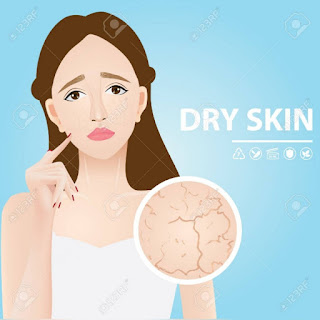Clay is a naturally occurring substance rich in minerals, usually found in volcanic ashes, sediments and the soil. The uses of clay are so versatile it's even used for medicinal purposes such as detoxifying the body and relieving digestive issues. Today our focus is going to be on the cosmetic use of clay, that is, what type of clay you should use for your skin type. But before we get into that let's check out the type of cosmetic clay there is and the benefits of using clay masks.
Types of Clay for Skin
- Moroccan Red Clay
White kaolin Clay
Bentonite Clay
French Green Clay
Fuller's Earth Clay
Rhassoul/ Ghassoul Clay
Benefits of Using Clay Masks
- Draws out impurities and detoxifies skin
- Brightens and improves skin tone
- Refines pores
- Regulates sebum production and restores skin's balance
- Oxygenates skin cells
- Rejuvenates and regenerates skin
- Softens and smoothens skin
- Mattifies skin appearance
- Antibacterial
- Completely natural
How to Choose the Right Clay for Your Skin Type
- Oily and Acne Prone Skin: your ideal choices are Moroccan Red Clay and white kaolin Clay as they are best known for absorbing excess oil. Moroccan red Clay is mined from the mountains of Morocco and deep cleanses the pores; white kaolin Clay is made from the mineral, kaolinite.
- Normal to Dry Skin: Bentonite Clay is the perfect Clay for this skin type. It absorbs excess oil while simultaneously tightening the skin. This clay is found in Fort Benton, Wyoming hence it's name. Bentonite Clay is also used to treat digestive disorders.
- Sensitive Skin: French green Clay is your clay mask. This clay originally found in France gets it's green color from an algae. If you suffer from sunburn, allergies and all, French green clay is the one for you. It is known to remove metals and has anti-inflammatory properties all thanks to the plant matter (algae) in the clay.
- Pigmented Skin: Fuller's Earth Clay to use if you're prone to hyperpigmentation. This clay got it's name from textile workers named Fuller who usually used this clay to remove oil from wool. This clay has lightening properties and is used to decolorize oil out of pores while drawing out excess sebum. For best results mix this clay with bentonite Clay
- Aging Skin: Rhassoul or Ghassoul Clay is the clay for aging skin. This clay is often confused with the Moroccan red Clay but they are not the same. It is the most hydrating and swells when water is added helping the skin retain it's moisture and thus, is the perfect Clay for a skin that is loosing it's elasticity and needs deep exfoliation.
How to Use Clay Masks
Clays are only active when wet
Mix clay with water, apply to the skin and allow to dry then rinse off. Very simple!
You can always mix clays to tackle different skin issues. What do you think is the ideal combination of clay for your skin type? Let me know in the comment section below










Comments
Post a Comment